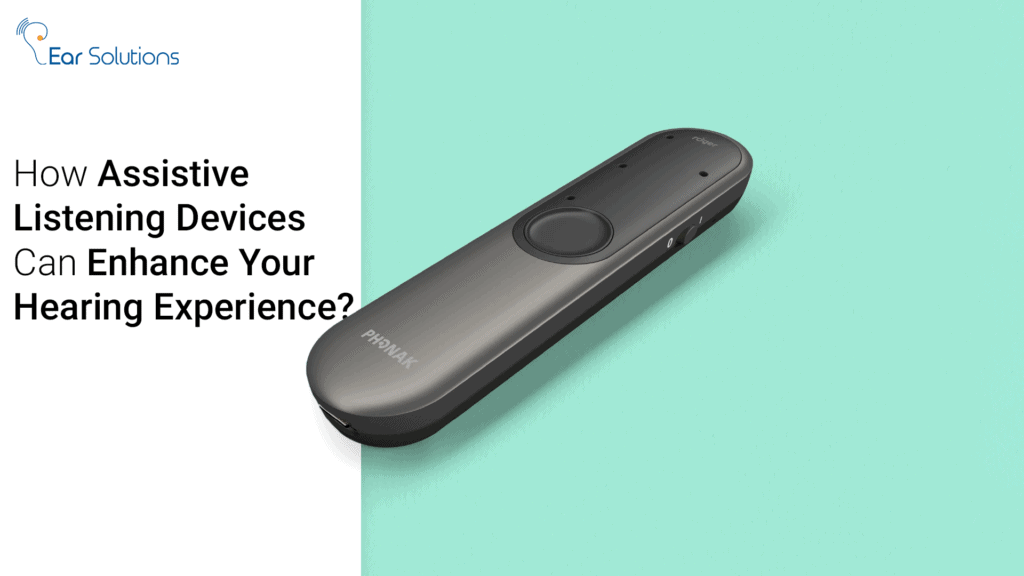Living with Hearing Loss can be challenging, but thanks to modern technology, individuals with hearing impairment have a wide range of solutions available to enhance their hearing experience. One such technology is Assistive Listening Devices (ALDs), which can significantly improve communication and engagement in various listening environments. In this blog, we will explore how assistive listening devices work, the different types of ALDs available, and the numerous ways in which these hearing aids devices can enrich the lives of individuals with hearing loss, providing them with better access to sound and an enhanced overall hearing experience.
Understanding Assistive Listening Devices:
Assistive listening devices (ALDs) are specialized technologies designed to improve the listening experience for individuals with hearing loss. Unlike hearing aids, which amplify all sounds in the environment, ALDs focus on capturing and transmitting specific sounds directly to the listener, enhancing speech clarity and reducing background noise. ALDs are particularly useful in challenging listening situations, such as noisy restaurants, classrooms, lectures, and public events, where background noise can interfere with speech understanding.
Types of Assistive Listening Devices:
There are various types of assistive listening devices, each catering to specific listening needs:
FM Systems: FM systems use radio frequency to transmit sound from a microphone worn by the speaker directly to the listener’s receiver. This technology is commonly used in educational settings, enabling students with hearing loss to hear their teachers clearly, regardless of the distance between them.
Inductive Loop Systems (Hearing Loops): Hearing loops use electromagnetic signals to transmit sound to telecoil-equipped hearing aids or cochlear implants. These loops are often installed in public venues, such as theaters, airports, and places of worship, offering direct sound delivery to the user’s hearing device.
Infrared Systems: Infrared systems use infrared light signals to transmit sound to a receiver, which is typically worn on the user’s body. These systems are commonly used in theaters, auditoriums, and conference rooms.
Bluetooth and Direct Audio Input (DAI): Some ALDs use Bluetooth or direct audio input to connect to smartphones, televisions, and other audio devices. This technology allows for direct audio streaming to the users of hearing aids or compatible accessories, providing seamless and personalized listening experiences.
Enhancing Communication and Social Interactions:
ALDs play a crucial role in enhancing communication and social interactions for individuals with hearing loss. By reducing background noise and delivering clear speech directly to the listener, ALDs improve speech understanding and make conversations more effortless. This, in turn, fosters better social connections, enabling individuals with hearing loss to actively participate in social gatherings, family events, and conversations with friends.
Improving Academic Performance and Learning
For students with hearing loss, ALDs can be transformative in educational settings. FM systems and hearing loops ensure that important classroom discussions and lectures are accessible to all students, irrespective of their hearing ability. By eliminating the barriers caused by distance and background noise, ALDs help students with hearing loss keep up with their peers and excel academically.
Enabling the Enjoyment of Entertainment
ALDs allow individuals with hearing loss to enjoy entertainment experiences that might have been challenging without the devices. Whether it’s watching a movie in a theater equipped with a hearing loop, attending a concert with a personal FM system, or streaming audio content directly to their hearing aids, ALDs offer an immersive and enjoyable entertainment experience.
Enhancing Safety and Alertness
ALDs also play a vital role in enhancing safety and alertness for individuals with hearing loss. In emergencies, hearing-impaired individuals might miss important auditory cues. ALDs, such as vibrating or flashing alerting systems, can provide timely notifications for fire alarms, doorbells, phone calls, and other essential alerts.
Conclusion
Assistive listening devices (ALDs) are powerful tools that enrich the hearing experience for individuals with hearing loss. From enhancing communication and social interactions to improving academic performance and ensuring safety, ALDs offer numerous benefits. By using ALDs in conjunction with hearing aids or cochlear implants, individuals with hearing loss can fully participate in all aspects of life, embracing the sounds of the world with clarity and confidence. If you or someone you know has hearing loss, exploring the various assistive listening devices available can be a transformative step toward a more engaging and fulfilling hearing experience.




